Ugadi for Hindus ushers in the New Year which is celebrated with joy and happiness. Various delicacies are prepared as part of the festival and the new Panchanga is brought out. This year, it is ‘Hevilambi Nama Samvatsara’ and we at Star of Mysore wish everyone a Happy Ugadi and pray that the New Year brings in joy and good health to all. This Weekend Star Supplement gives our readers an insight into the customs and traditions of Ugadi.
Ushering in New Year with divinity & joy
Ugadi is the New Year’s Day for the people of Telugu and Kannada communities. It falls on a different day every year because the Hindu calendar is a lunisolar calendar. A lunisolar calendar is a calendar in many cultures whose date indicates both the moon phase and the time of the solar year. The calendar begins with the month of Chaitra (March-April) and Ugadi marks the first day of the New Year.
The name Yugadi or Ugadi is derived from Sanskrit words ‘yuga’ (age) and ‘adi’ (beginning).
In the terminology used by the Andhra-Kannada lunisolar calendar, Ugadi falls on ‘Chaitra Shudhdha Paadyami’ or the first day of the bright half of the Indian month of Chaitra. This generally falls in the months of March or April of the Gregorian calendar.

The Telugu, Kannada, Marathi and the Konkani diaspora in Telangana, Andhra Pradesh, Karnataka, Maharashtra, Goa, Tamil Nadu and Kerala celebrate the festival. The day begins with ritual showers with oil, followed by prayers. This tristate festival could be the result of the common rulers from the Shathavahana Dynasty.
Lord Brahma, the creator is believed to be associated with the day of Ugadi festival because of his creation of the universe which includes the days, months and years along with vital elements of nature.
Legend says that Lord Karthikeya once urged people to tie fresh leaves of a mango tree to the doorway in order to indicate a good yield.
The festival of Ugadi is significant because it is a New Year’s day that occurs on the onset of spring season and marks the beginning of a happy, healthy and prosperous year by giving way to cleanliness, new purchases and ritual observances.
During Ugadi festival, ‘Panchanga Sravanam’ is an event that is organised to predict the future and give remedies for overcoming difficult moments ahead. The scriptures of the Panchanga state that the readers as well as listeners are benefited with “punya” which is equivalent to having a dip in the holy river of Ganges.
In Karnataka, after the pooja, ‘Bevu Bella’ (mixture of jaggery and neem leaves) is distributed among family members and relatives which signifies that life is a mixture of sweet and bitter days, joy and sorrow and that these should be accepted as a part and parcel of life because the Lord will always be there to bless and protect.
During the festival of Ugadi, temples and houses are decorated with fresh jasmine flowers and leaves of mango trees. The leaves of mango trees are tied to the doorway where all the members of the family gather for prayers to seek blessings from the God. People prepare special dishes to mark the festival.
Fresh water mixed with cow dung is splashed in front of the house where colourful rangoli designs are drawn.
The main rituals such as to watch one’s reflection in a bowl of molten ghee; to apply kumkum to younger members and performing aarati by the elderly women of the family; to take oil bath; to wear new clothes; to offer leaves of neem, mango and tamarind to Gods; to offer garlands made of jasmine flowers to God; to give oil bath to the idols of Gods; to perform puja by following the steps of Abhisheka, Alankara, Naivedya and Mangalarathi; to worship the Panchanga for the new Samvathsara among others are performed.
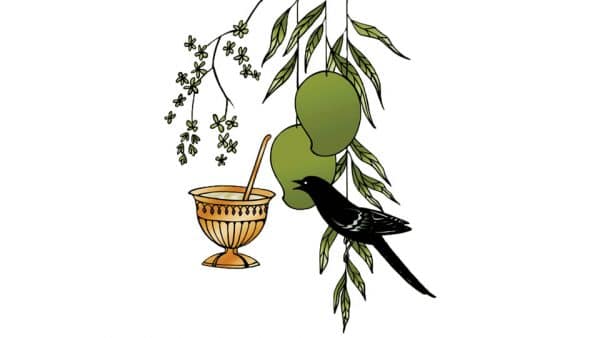
After rituals, several other dishes are also served for the feast such as Mango rice and Holige (Obbattu).
People visit temples and houses of friends and relatives and enjoy the feast together, strengthening human relationships are strengthened.
In Andhra Pradesh, rituals include cleaning of house and surrounding, decorating entrances with green mango leaves, buying new clothes for family. They wake up early in the morning and bathe using sesame oil and visit temples to offer prayers.
Ugadi Pachadi, a low-calorie healthy preparation is made from neem flowers, tamarind, jaggery and fresh raw mangoes. This contains nutrients that cleanse the system and prevents illness.
Samvatsara: Samvatsara is a Sanskrit term for ‘year’. In the Hindu calendar, there are 60 Samvatsaras, each of which has a name. Once all 60 Samvatsaras are over, the cycle starts all over again. On occasion, one will be skipped, as the count is based on the zodiac position of Jupiter, whose period around the Sun is slightly less than 12 years (the full cycle of 60 covers five Jovian years).
The sixty Samvatsaras are divided into 3 groups of 20 Samvatsaras each. The first 20 from Prabhava to Vyaya Samvatsara are assigned to Brahma. The next 20 from Sarvajit to Parabhava to Vishnu and the last 20 to Shiva. The upcoming samvatsara is named ‘Hevilambi’.

Panchanga Shravanam is the most vital aspect of the festival, which is done by the priests.
The priest reads the Panchanga, predictions during prosperity and wealth during the year and concludes with the forecast of various aspects of social life. According to scriptures, the benefits enjoyed by the reader and listener are the same of having a dip in Ganges, the holy river. The listeners, then, respectfully appreciate the reader, seek his blessings and offer new clothes to him.
SPECIAL DISHES ON UGADI
Mango Rice: Mango Rice is a part of Ugadi festival cuisine which is prepared using raw mango chutney added with various masalas. The festival also marks the arrival of Mango.

Obbattu: Obbattu also known as Holige is a popular traditional type of sweet flat-bread. It is generally prepared for special occasions and festivals especially Ugadi. There are many varieties of Obbattu which include peanut, sugar, coconut, sesame and groundnut flavours. The dish is produced using a sweet filling inside flour dough which is rolled out and cooked on a hot griddle and is usually served with ghee.

Shavige Payasa: Shavige Payasa is one of the most important cuisines which is prepared during Ugadi. The dish is the first thing to be served on plantain leaves before other delicacies are served.
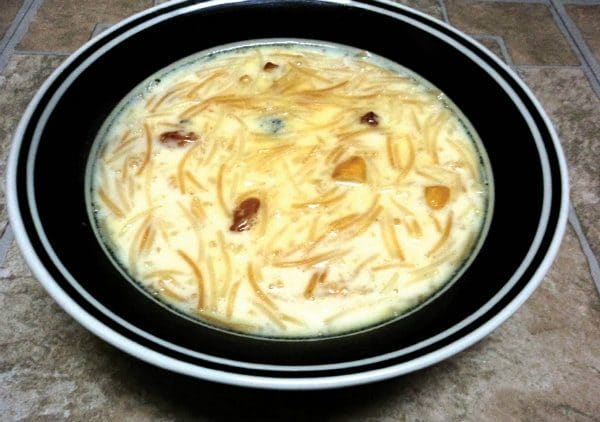
Amazing Rangolis for Ugadi
Rangoli, the symbol of auspiciousness that is drawn to decorate the front yard of homes is a common sight in all Hindu homes in the country. But come festivities, the fervour to illustrate them among women in Hindu households will know no bounds.
And with the festival being just round the corner, here’s a great chance for you to illustrate a wide variety of designs on the floor at home, and decorate the same with some vibrant and catchy colours that will not just enhance the look of your home, but will also spice up moods and minds.
Let us start with a mention of the traditional ones first.
Rice Flour Rangolis: This is a very traditional method of drawing rangolis of traditional designs. The flour, when mixed with the right quantity of water, will allow a smooth flow, letting your fingers create a beautiful magic in the form of real intricate designs. To make it look a bit colourful yet sober, you can also mix a tinge of turmeric or kumkum in the paste.
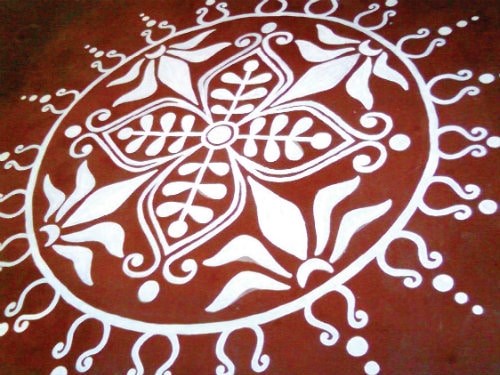
Modern Day Designs: The modern day rangolis are all of plenty of deigns and decorative ideas. Created out of everything from rava to crystal salt and colourful beads to coloured chalk powder and flowers, each type of it will look prettier than the other when the floors at home are decorated colourfully with them.

Saw Dust or Food Grains: You can use coloured saw dust too. Colour the saw dust with bright water colours, draw an outline and fill its interiors with the coloured dust. Or fill it up with multi-coloured grains that will also add up a special touch to your beautiful rangoli.
Rava / Crystal Salt: This is used to ensure a quick completion of bigger designs and for a prettier look. Mix the crystal salt or rava with the bright rangoli colours available in the market, draw a nice deign in chalk and start filling the interiors with the coloured salt/rava and see how beautiful your creation looks.
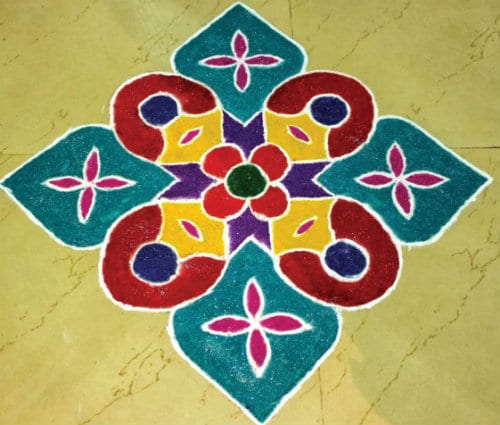
Flower Petal : We are sure that we need not tell you about the beauty of floral rangolis. They look magical and enchanting when created broad and beautifully on floor, with petals of multi-coloured flowers. Try this, and chances are you will hate to clear the floor next morning.
Sieves and Diyas: You have created that beautiful looking elaborate rangoli but wish to make it look perfect? Then use sieves to fill them with colours instead of filling them with hand and once complete, decorate the same with brightly lit diyas, which will add up to the beauty of your creation.
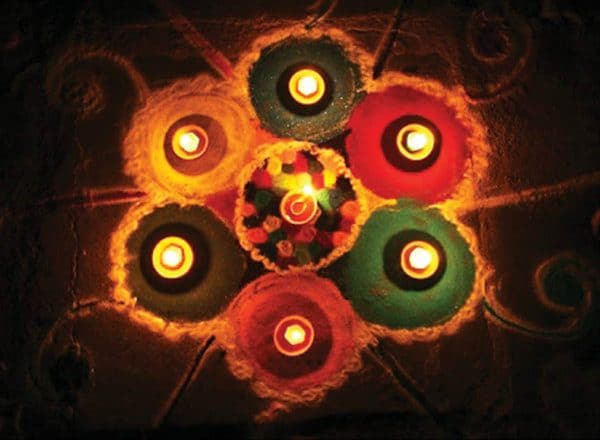
Stencil them: This is for those of you who do not know to create a rangoli. Available in the market out there are plenty of stencils with a wide variety of deigns including those to decorate the corners of the floors which can be filled with white or coloured chalk powders and wish to spend time creating traditional designs or coloured rangolis, all you need to do is purchase the ready-made ones created out of bright beautiful coloured beads stuck on transparent plastic sheets and keep them at the desired place at home, which is sure to attract all eyes towards it. —AN



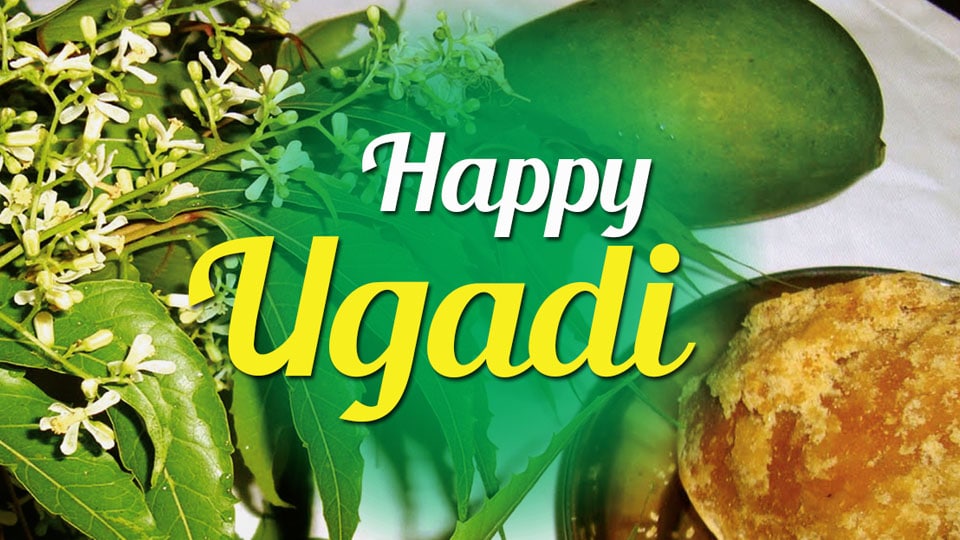




Recent Comments